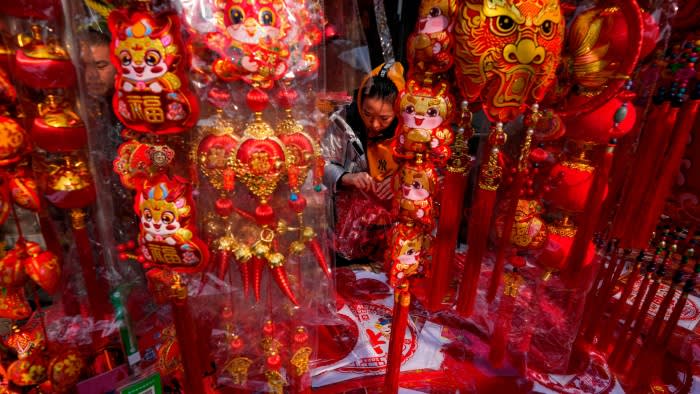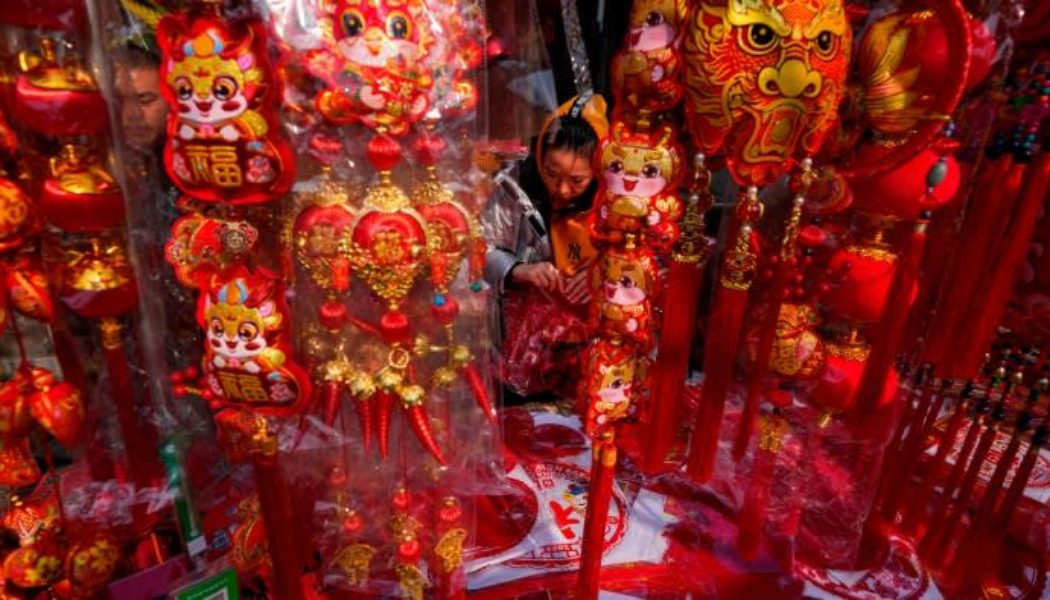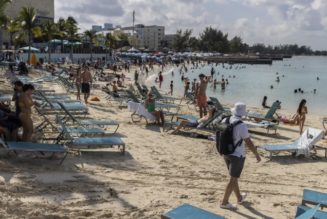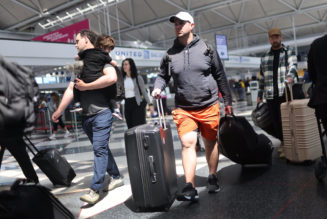
Stay informed with free updates
Simply sign up to the Chinese economy myFT Digest — delivered directly to your inbox.
China’s annual lunar new year travel rush is expected to reach “historic” levels this year, as policymakers hope the country’s festive season will help lift the world’s second-largest economy out of deflation.
Chinese travellers have made more than 230mn “cross-regional” trips as of Tuesday, the most recent figures available, for the new year break, the ministry of transport said on Friday. This was up 5.8 per cent compared with the same period in 2023 and up 1.1 per cent compared with 2019, before the pandemic.
Authorities are predicting that during the entire 40-day span of what state media call the “Spring Festival holiday travel rush”, which runs from January 26 to March 5, Chinese residents will make 9bn trips, 80 per cent of them using private vehicles.
“This year’s spring festival travel rush is set to make history,” Li Yang, deputy minister of transport said in a preview of the festival travel arrangements in January.
This lunar new year, which begins on Saturday, is the first since 2019 to not be affected by the coronavirus pandemic, making it an important barometer of consumer sentiment. China has struggled to engineer a strong economic recovery in the wake of the pandemic, with gross domestic product expanding 5.2 per cent last year.
China’s official statistics agency this week reported a steeper year-on-year contraction than expected in the consumer price index for January — the fifth month that prices were either flat or falling — raising concerns that a deflationary cycle is becoming entrenched.
Alicia García-Herrero, chief Asia-Pacific economist at Natixis, said while the number of trips might pick up, consumers were unlikely to spend as in previous years given the weak economy, a property sector slowdown and low confidence.
“You have some pent-up demand for travel in there so that might be good, but I don’t think the expenditure side will be as good,” she said.
China’s rubber-stamp congress is due to meet in March to set the growth target for 2024, with most economists predicting it will be the same as last year’s 5 per cent — the lowest such goal in decades, and one that will be more challenging to achieve this year unless the property market stabilises.
But economists said that a rise in consumption in February because of the festival, as well as a more favourable base effect from 2023, could lift CPI into positive territory this month.
“Preliminary data coming out of the lunar new year activity is coming in rosy,” HSBC analysts wrote in a note. It said domestic travel demand was higher than pre-pandemic levels, with the number of train passengers up 22 per cent and air travellers up 17 per cent for the first 12 days of the travel holiday relative to the same period in 2019.
The Ministry of Commerce reported that sales on important ecommerce platforms had risen 20 per cent compared with a year earlier as of late January, while overall online retail sales were up nearly 9 per cent on 2023.
“China’s lunar new year holiday will . . . provide a snapshot of the country’s economy,” Gavekal said in a research note.
It said travel and tourism had been the best performing part of “an otherwise uninspiring economic recovery”, largely because it had been repressed by pandemic controls.
“The question will be exactly how much better the numbers are than the same period in 2019 and, in turn, what that signals about households’ willingness to spend,” Gavekal said.









